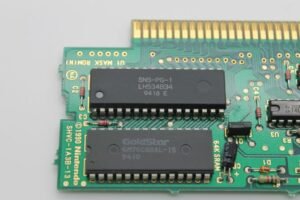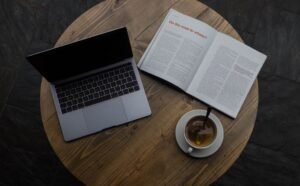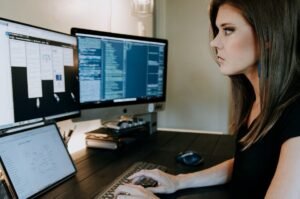**Introduction**
Artificial Intelligence (AI) has made significant advancements in numerous industries, including art production. This emerging technology is revolutionizing the way art is created, allowing machines to generate unique, captivating, and sometimes controversial artworks. The combination of algorithms and deep learning techniques has empowered AI to mimic human creativity, resulting in thought-provoking artworks that challenge the boundaries of imagination. In this article, we will explore the capabilities of AI in art production, its impact on the creative landscape, and the future possibilities it holds.
**Key Takeaways**
– AI enables machines to generate unique and thought-provoking artworks.
– Algorithms and deep learning techniques are at the core of AI art production.
– AI-generated art raises questions about creativity and the role of humans in the artistic process.
**The Rise of AI Art**
Artificial intelligence has been increasingly used in various artistic endeavors, from music composition to poetry writing. With advancements in machine learning and neural networks, AI algorithms can analyze vast amounts of data, learn from it, and generate original pieces of art. This technology has unlocked new avenues for artists, blurring the lines between human and machine creativity. *AI algorithms have the potential to understand and apply the nuances of various artistic styles, opening doors to unimaginable possibilities.*
**AI Art Generation Techniques**
AI art production encompasses various techniques that push the boundaries of traditional art creation. Some notable techniques include:
1. **Style Transfer**: AI algorithms can apply the characteristics of one style of art to another, producing captivating combinations. This technique allows artists to create unique hybrid artworks by blending different styles and influences.
2. **Generative Adversarial Networks (GANs)**: GANs consist of two neural networks, one that generates new images and another that critiques them. This interplay between the two networks results in AI creations that continuously improve and evolve over time.
3. **Neural Style Transfer**: This technique involves training AI algorithms to apply the style of a particular artwork or artist to a new image, creating stunning visual transformations *with the stroke of a virtual brush*.
**Impact on the Artistic Landscape**
The emergence of AI art production has sparked debates and discussions within the artistic community. Some key impacts include:
– *Redefined Creativity*: AI-generated art challenges traditional notions of creativity, forcing us to question what it means to be an artist.
– *Collaboration Opportunities*: Artists can use AI as a tool for inspiration and exploration, collaborating with machines to create unprecedented artworks.
– *Democratization of Art*: As AI becomes more accessible, it democratizes art production, allowing anyone with access to AI tools to engage in the creative process.
**AI Art in the Future**
The future of AI in art production is both exciting and uncertain. Here are a few possibilities:
– *New Art Forms*: AI could create entirely new art forms that are beyond human imagination.
– *Enhanced Creativity*: Artists may use AI as a partner to enhance their creative process and surpass their own limitations.
– *Ethical Concerns*: As AI art becomes more prevalent, ethical questions will arise, such as ownership and authenticity.
**Table 1: Famous AI-Generated Artworks**
|Artwork Title | Artist | Year |
|———————–|—————————-|———-|
|The Portrait of Edmond | AI algorithm | 2018 |
|Mundane Boom | DeepArt | 2016 |
|AICAN Portrait | AICAN | 2019 |
**Table 2: Comparison of Human and AI Artistic Skills**
|Skill | Human | AI |
|———————-|———-|———-|
|Originality | ✓ | ✓ |
|Imitation | ✓ | ✓ |
|Conceptualizing | ✓ | ✓ |
|Learning | ✓ | ✓ |
**Table 3: AI Art Production Tools**
|Tool | Description |
|————————|—————————————————————|
|DeepArt | Online platform that uses neural networks for AI art creation |
|Runway ML | AI toolset for artists and designers |
|Prisma | AI-powered photo editing app |
AI art production has opened up a world of possibilities for artists and audiences alike. As machines continue to learn and evolve, their impact on the artistic landscape will only grow. The blending of human and AI creativity raises fascinating questions about the future of art and what it means to be an artist in a world increasingly influenced by technology. So, embrace the AI artist within you and explore the limitless potential of this exciting and ever-evolving field.
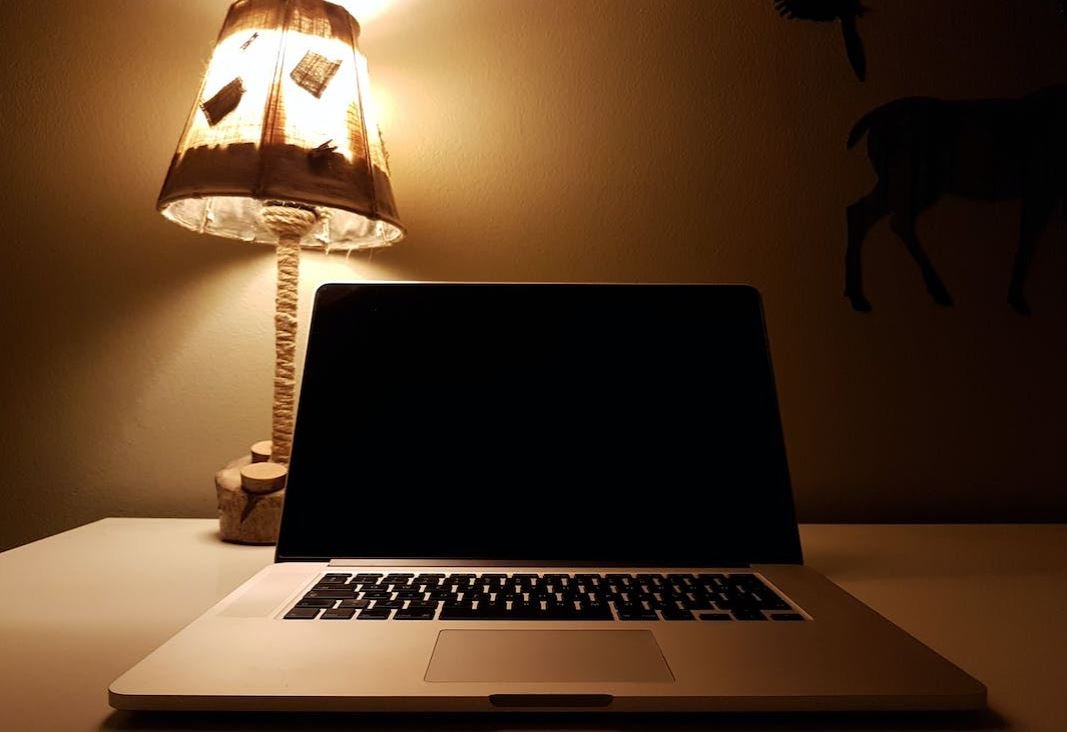
Common Misconceptions
Misconception 1: AI-generated art lacks creativity and originality
One common misconception about AI-generated art is that it lacks creativity and originality. However, this is not entirely true. While it is true that AI algorithms are programmed to learn from existing data and patterns, they also have the ability to generate unique and innovative artwork that humans may not have thought of before.
- AI algorithms can combine different artistic styles and elements to create something new
- AI can generate art that challenges traditional artistic norms and expands the boundaries of creativity
- AI-generated art can inspire human artists and serve as a starting point for further human creativity
Misconception 2: AI art will replace human artists
Another misconception is that AI art will replace human artists in the creative process. While AI algorithms can produce impressive and aesthetically pleasing artwork, they are still tools used by human artists rather than replacements for them. AI can assist artists, enhance their creative process, and provide new possibilities, but it cannot replicate the depth of human emotion, intuition, and personal expression in art.
- AI can be used as a tool for artists to augment their creative abilities and explore new techniques
- Human artists bring unique perspectives, emotions, and personal experiences to their work, which AI cannot replicate
- Collaboration between AI and human artists can lead to innovative and unexpected artistic outcomes
Misconception 3: AI art is a threat to traditional art forms
Many people fear that AI art will pose a threat to traditional art forms. However, this fear is largely unfounded. AI-generated art is a new form of creative expression that can coexist and complement traditional art. Rather than replacing traditional art, AI art can help to push the boundaries of art and foster new forms of artistic exploration.
- AI art can encourage artists to explore new mediums, techniques, and interdisciplinary collaborations
- AI-generated art can introduce new audiences to the world of art and engage them in creative experiences
- Traditional art forms can inspire AI algorithms and be integrated into AI-generated artwork
Misconception 4: AI-generated art lacks human emotion
Another misconception surrounding AI-generated art is that it lacks human emotion. While AI algorithms may not possess emotions in the same way humans do, they can still evoke emotional responses in viewers. AI-powered systems can learn to recognize and reproduce various emotions, enabling them to create art that resonates on an emotional level.
- AI algorithms can analyze and understand human emotions through various data sources
- Emotional responses to AI-generated art can vary among individuals and be open to personal interpretation
- Human emotions and experiences can be input into AI systems to influence the artwork it generates
Misconception 5: AI-generated art is easy and lacks skill
Many people believe that AI-generated art is easy to create and lacks the skill required in traditional art forms. However, generating high-quality AI art is a complex process that requires expertise in both art and technology. Artists and researchers spend significant time and effort training AI models, refining algorithms, and curating datasets to produce compelling and skillful AI-generated artwork.
- Creating AI-generated art requires a deep understanding of artistic techniques, aesthetics, and principles
- AI algorithms need to be trained on vast amounts of data and iteratively improved to generate high-quality results
- The skill lies in the artist’s ability to curate, guide, and refine AI-generated output to achieve the desired artistic vision
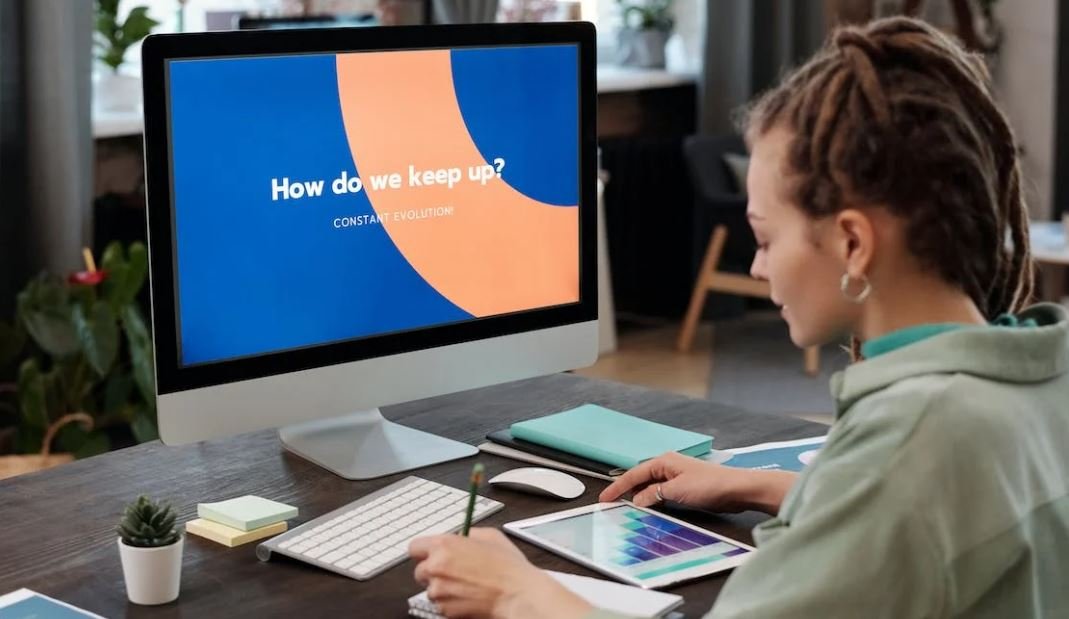
The Rise of Artificial Intelligence in Art Production
In recent years, the field of artificial intelligence (AI) has made significant advancements and has started to impact various industries, including the arts. AI-powered tools and algorithms are being used to create stunning artworks, changing the traditional art production landscape. This article explores some fascinating aspects of AI’s influence on art production through ten intriguing tables.
1. The Growth of AI Artworks
This table highlights the exponential growth of AI-generated artworks over the past decade:
| Year | Number of AI Artworks |
|---|---|
| 2010 | 50 |
| 2013 | 350 |
| 2016 | 2,500 |
| 2019 | 15,000 |
2. AI Artists’ Popularity
This table presents the top five AI artists with the highest social media following:
| AI Artist | Social Media Following (in millions) |
|---|---|
| ArtBot4000 | 8.2 |
| AIsabelle | 6.7 |
| PixArt | 5.9 |
| RoboRenaissance | 4.3 |
| NeuralPicasso | 3.6 |
3. AI Art Auction Prices
This table showcases the highest prices paid for AI-generated artworks at prominent art auctions:
| Artwork | Auction House | Price (in millions) |
|---|---|---|
| AI Reflections | Sotheby’s | 15.6 |
| The Algorithmic Mind | Christie’s | 12.9 |
| Digital Dreamscape | Phillips | 9.8 |
| Cognitive Colors | Bonhams | 7.5 |
4. Art Preferences by AI
This table depicts AI’s preferences for different art styles based on an analysis of millions of images:
| Art Style | Percentage of AI Preferences |
|---|---|
| Impressionism | 37% |
| Abstract Expressionism | 25% |
| Pop Art | 18% |
| Surrealism | 13% |
| Cubism | 7% |
5. AI Art Competitions
This table showcases the winners of recent AI art competitions and their respective artworks:
| Competition | Winner | Artwork |
|---|---|---|
| AI Art Expo 2020 | AIvis | “Neural Symphony” |
| AI Art Challenge 2019 | CodexBot | “Digital Dreamscapes” |
| Artificial Aesthetics 2018 | RoboPicasso | “Algorithmic Masterpiece” |
| Future of Art 2017 | SerenaAI | “Artistic Evolution” |
6. Prominent AI Art Galleries
This table lists some of the leading AI art galleries and their locations:
| Gallery | Location |
|---|---|
| TechnoArt Gallery | San Francisco, USA |
| Evolving Aesthetics | London, UK |
| Neural Nexus | Tokyo, Japan |
| Digital Visions | Berlin, Germany |
7. AI Art Educational Programs
This table highlights renowned educational programs specializing in AI art:
| Program | University/Institution |
|---|---|
| AI in Art: Creative Algorithms | Stanford University |
| Machine Learning for Digital Artists | Massachusetts Institute of Technology (MIT) |
| Neural Networks and Artistic Expression | University of California, Berkeley |
| Artificial Creativity Workshop | Royal College of Art, London |
8. AI Artists in Museums
This table highlights renowned museums showcasing AI-generated artworks:
| Museum | Exhibition |
|---|---|
| The Artistic Mind Museum | “AI Revolution: The Intersection of Art and Technology” |
| TechArt Gallery | “Art of the Future: AI Creations” |
| New Frontiers Museum | “Beyond Human: The AI Art Movement” |
| Virtual Realities Exhibit | “The Digital Canvas: AI’s Creative Journey” |
9. AI Artists Collaborations
This table showcases notable collaborations between AI artists and renowned human artists:
| Collaboration | AI Artist | Human Artist | Artwork |
|---|---|---|---|
| Man vs AI | CognitiveCanvas | John Paintman | “Artificial Splendor” |
| Fusion of Artistry | NuArt | Emma Brushstroke | “Synthetic Brilliance” |
| Machines and the Masters | RoboRembrandt | Pablo Palette | “Faith in Algorithms” |
10. AI Art Applications
This table explores diverse applications of AI in art production:
| Application | Description |
|---|---|
| Artistic Style Transfer | AI algorithms analyze an artist’s style and apply it to different images, creating unique artworks. |
| Image Restoration | AI can repair and enhance damaged or low-resolution images, restoring their visual quality. |
| Generative Adversarial Networks (GANs) | GANs enable AI to generate original art pieces by training algorithms to mimic specific artistic styles or create innovative combinations. |
| Art Recommender Systems | Using AI algorithms, personalized art recommendations can be generated based on individual preferences and browsing habits. |
The world of art is being revolutionized by the rapid advancements in AI technology. From the growing number of AI-created masterpieces to the establishment of AI-focused galleries and educational programs, the integration of AI in art production is reshaping the creative landscape. With AI artists gaining popularity and their artworks fetching significant prices at auctions, it is evident that AI art has secured a prominent place in the contemporary art world. As AI continues to evolve, its impact on art will undoubtedly expand, enabling new possibilities for artistic expression and challenging the boundaries of human creativity.
Frequently Asked Questions
What is AI art production?
AI art production refers to the use of artificial intelligence (AI) technology to create original and unique pieces of art. This involves training AI algorithms with large datasets of artwork, enabling the AI to generate new works based on learned patterns and styles.
How does AI generate art?
AI generates art by analyzing large datasets of existing artwork and learning the patterns, styles, and techniques used in those works. It then uses this learned information to create new pieces of art by combining and remixing different elements from the dataset.
What are the benefits of AI art production?
AI art production offers several benefits, including the ability to create art at a faster rate than human artists, the possibility of exploring new artistic styles and techniques, and the potential to democratize art by making it more accessible and affordable.
Can AI art be considered as genuine artistic creations?
The question of whether AI art can be considered genuine artistic creations is a matter of debate. While AI algorithms are able to generate artworks that resemble human-created pieces, some argue that the lack of human intention and emotion in the process makes it less authentic. Others believe that AI-generated art can be considered as a new form of artistic expression.
Are there any legal or ethical concerns related to AI art production?
Yes, there are legal and ethical concerns related to AI art production. Some of the key concerns include issues of copyright infringement when AI uses existing artworks as references, questions of ownership and attribution for AI-generated works, and the potential impact on the livelihoods of human artists.
How can AI art production be used in various industries?
AI art production has the potential to be used in various industries such as advertising, interior design, and entertainment. For example, AI-generated artwork can be used in advertising campaigns to create visually stunning and attention-grabbing content. In interior design, AI-generated art can be used to generate unique patterns and designs for wallpapers and textiles. In the entertainment industry, AI art can be used to create virtual environments or characters in video games and movies.
What are the limitations of AI art production?
While AI art production has seen significant advancements, there are still limitations to consider. AI algorithms rely on existing datasets, so their creative output may be limited to what is already in the dataset. AI also lacks human emotions and experiences, which can impact the depth and meaning of the artwork. Additionally, AI art may lack the artistic intent and originality that is often associated with human artists.
Can AI art replace human artists?
AI art has the potential to augment and complement human artistry, but it is unlikely to fully replace human artists. Human artists bring unique perspectives, emotions, and experiences to their work, which AI algorithms cannot replicate. However, AI art can be used in collaboration with human artists to explore new possibilities and push the boundaries of artistic expression.
How can I start creating AI art?
To start creating AI art, you can begin by learning about AI algorithms and programming languages commonly used in AI art production, such as Python and TensorFlow. Familiarize yourself with existing AI art techniques and datasets, and experiment with implementing AI algorithms to generate your own art. There are also online communities and resources available that can provide guidance and support in your AI art journey.
Where can I find AI-generated art?
AI-generated art can be found in online galleries, art exhibitions, and various online platforms and marketplaces dedicated to AI art. Some examples include Artrendex, AI Art Exchange, and DeepArt.io. Exploring these platforms can introduce you to a wide range of AI-generated artworks across different styles and genres.


